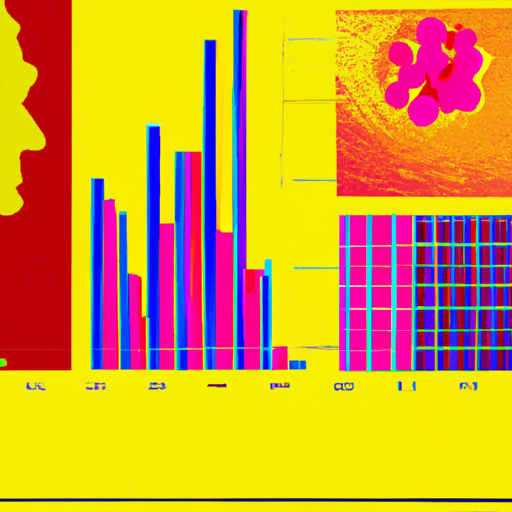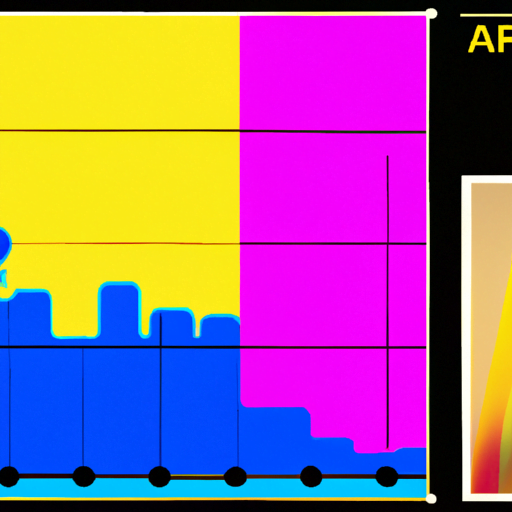
-
Table of Contents
The Art of Data Visualization: AI’s Impact on Charts and Graphs

Data visualization is a powerful tool that allows us to understand complex information quickly and effectively. Charts and graphs are the backbone of data visualization, providing a visual representation of data that can be easily interpreted. With the advent of artificial intelligence (AI), data visualization has taken a giant leap forward, enabling us to create more sophisticated and interactive visualizations. In this article, we will explore the impact of AI on charts and graphs, and how it is revolutionizing the art of data visualization.
The Rise of AI in Data Visualization
Artificial intelligence has made significant advancements in recent years, and its impact on data visualization cannot be overstated. AI algorithms can now analyze vast amounts of data and generate meaningful insights, making it easier for us to understand complex patterns and trends. When it comes to charts and graphs, AI has brought several key advancements:
- Automated Data Analysis: AI algorithms can automatically analyze data and identify patterns, outliers, and correlations. This allows us to create charts and graphs that highlight the most important information, making it easier for viewers to understand the data at a glance.
- Smart Chart Recommendations: AI-powered tools can recommend the most appropriate chart type based on the data being visualized. For example, if you have a dataset with time-series data, the tool might suggest using a line chart to show the trend over time. This helps users create visually appealing and informative visualizations without the need for extensive knowledge of data visualization principles.
- Real-time Data Visualization: AI algorithms can process and visualize data in real-time, allowing us to create dynamic and interactive charts and graphs. This is particularly useful in fields such as finance and healthcare, where real-time data analysis is crucial for decision-making.
Enhancing Chart Design with AI
AI is not only improving the analysis and generation of charts and graphs but also enhancing their design. Design plays a crucial role in data visualization, as it can significantly impact how effectively the information is communicated. Here are some ways AI is enhancing chart design:
- Color Palette Generation: AI algorithms can generate aesthetically pleasing color palettes that are visually appealing and accessible. These algorithms take into account factors such as color theory, contrast, and accessibility guidelines to create harmonious color schemes that enhance the readability of charts and graphs.
- Layout Optimization: AI can optimize the layout of charts and graphs to maximize the use of space and improve readability. For example, an AI algorithm can automatically adjust the size and position of chart elements to avoid clutter and ensure that the most important information is highlighted.
- Icon and Symbol Selection: AI algorithms can analyze the data being visualized and suggest relevant icons or symbols to enhance the understanding of the information. For example, if you are visualizing data about different countries, the AI tool might suggest using country flags as symbols to represent each country in the chart.
Case Studies: AI in Action
Let’s take a look at some real-world examples of how AI is revolutionizing the art of data visualization:
1. Google’s Smart Charts
Google has developed an AI-powered tool called Smart Charts, which helps users create visually appealing and informative charts and graphs. The tool uses AI algorithms to analyze the data and recommend the most appropriate chart type, color palette, and layout. It also provides real-time data visualization capabilities, allowing users to interact with the charts and explore the data in more detail.
2. Tableau’s Ask Data
Tableau, a leading data visualization software company, has integrated AI into its platform with a feature called Ask Data. Ask Data allows users to ask questions about their data using natural language and receive instant visualizations as answers. The AI algorithms behind Ask Data analyze the user’s query, understand the intent, and generate the most relevant chart or graph to answer the question. This makes data exploration and analysis more accessible to users without extensive technical knowledge.
The Future of AI in Data Visualization
The future of AI in data visualization is promising. As AI continues to advance, we can expect even more sophisticated and intelligent tools that will revolutionize the way we visualize and understand data. Here are some potential future developments:
- Personalized Visualizations: AI algorithms could analyze individual preferences and create personalized visualizations tailored to each user’s needs. This would enable users to interact with data in a way that is most meaningful and intuitive to them.
- Augmented Reality (AR) Visualization: AI-powered AR visualization tools could overlay data visualizations onto the real world, allowing users to explore and interact with data in a more immersive and intuitive way.
- Automated Storytelling: AI algorithms could automatically generate narratives and insights from data, turning raw numbers into compelling stories. This would make data visualization more engaging and accessible to a wider audience.
Summary
AI has had a profound impact on the art of data visualization, particularly in the realm of charts and graphs. It has enabled automated data analysis, smart chart recommendations, and real-time visualization, making it easier for us to understand complex information. AI has also enhanced chart design by generating color palettes, optimizing layouts, and suggesting relevant icons and symbols. Real-world examples such as Google’s Smart Charts and Tableau’s Ask Data demonstrate the power of AI in action. Looking ahead, the future of AI in data visualization holds exciting possibilities, including personalized visualizations, AR visualization, and automated storytelling. As AI continues to evolve, we can expect data visualization to become even more powerful and accessible, enabling us to unlock valuable insights from data with ease.
